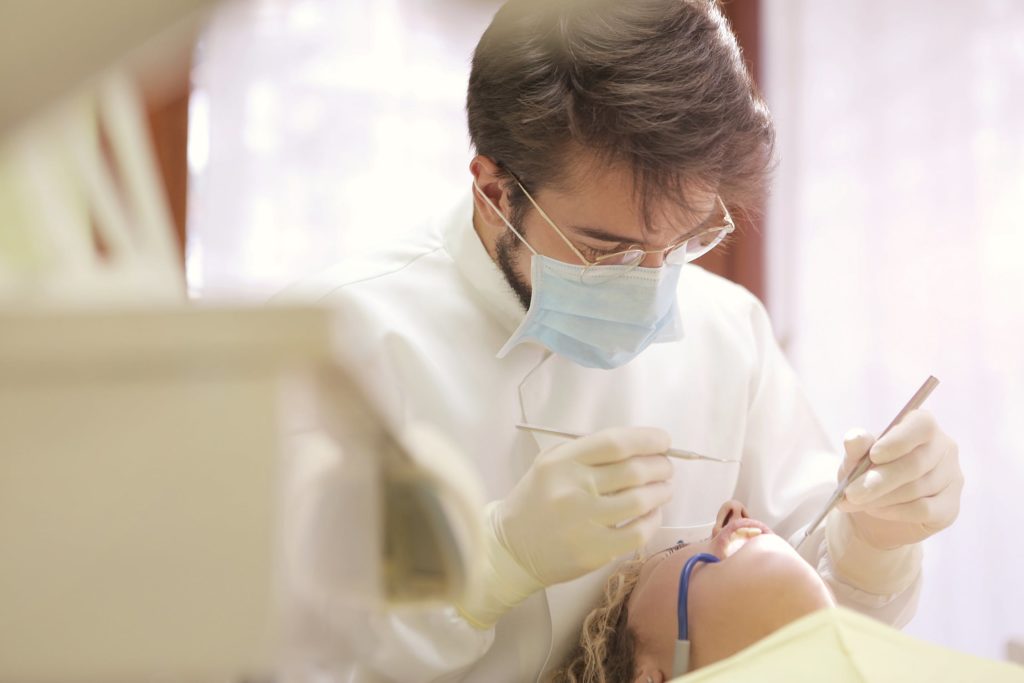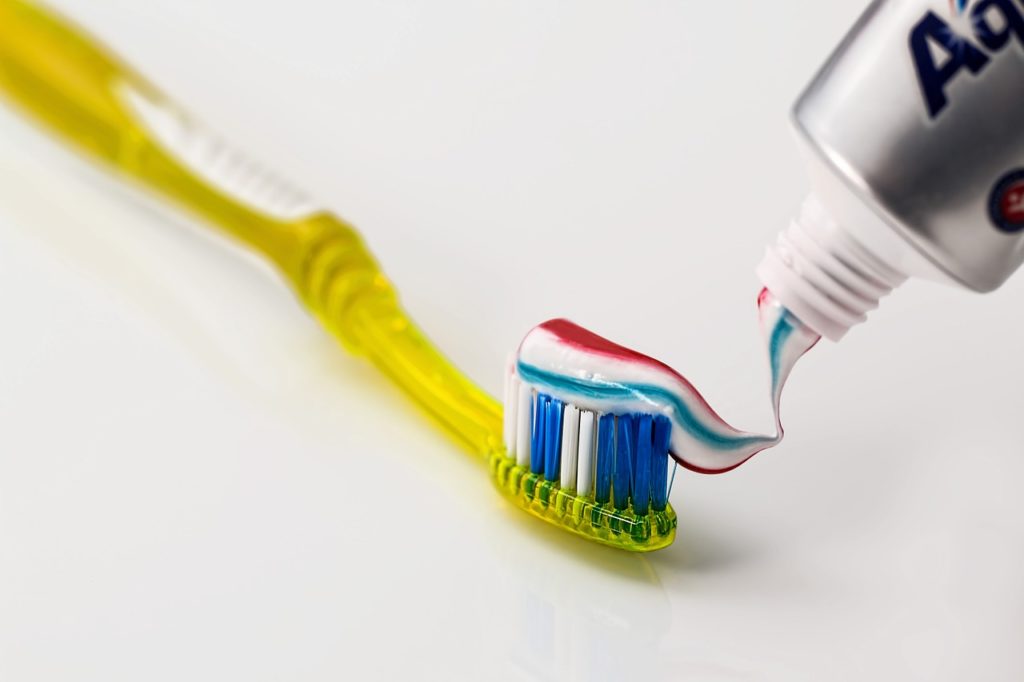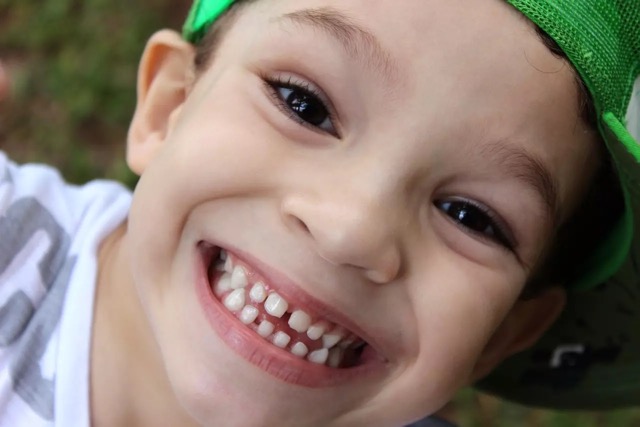Growing up is a difficult time for kids and having braces can make life tough. Most kids need to wear braces around the age of 9 years and for parents, this rite of passage can be expensive. Statistics show that close to 300,000 children in Canada are undergoing some kind of treatment at an orthodontist.
That’s the branch of dentistry that deals with dental issues like crooked or misaligned teeth, or an improper overbite. If your child has any of these problems, the dentist might advise that you start treatment at a young age. In recent times, an innovative option is now available that can correct dental flaws. However, whether or not Invisalign for kids is a suitable option is an issue still under debate
Conventional Braces Have Been Used by Orthodontists for Generations
Traditionally, doctors believed that getting braces as soon as the child cuts their permanent teeth can make it easier for the teeth and jaw structure to develop properly. Typically, kids start with the treatment at around 12 to 14 years. If you also had braces as a child, you’ll remember the pain and discomfort they caused. And, how you would dread visiting the dentist for adjustments. Before invisible braces or Invisalign braces were available, conventional braces were the norm. Depending on the severity of the problem, patients would have to go for bands, brackets, wires, and possibly, even headgears.
Even today, dentists may advise a two-step treatment plan extending over a couple of years. The first phase starts at around age 9 while the second phase is done during the teenage years. Or, you could opt for Invisalign for kids. The underlying principle is to gently nudge the teeth into proper alignment and correct any imperfections. Do keep in mind that misalignment can lead to a host of other problems like cavities, periodontal disease, and the accumulation of tartar. Some kids also develop a lisp and have trouble chewing their food properly.
Conventional Braces or Invisalign Braces – What’s the Better Choice?
When discussing your options with the dentist, you’ll learn that both conventional braces and Invisalign for kids work well. Modern-day braces no longer have that metallic look like in the past. In place of elastic bands, dentists may opt to use brackets that are bonded on the surface of each tooth. Some of the materials used to make the braces resemble the color and appearance of the original tooth. Parents can choose from a range of materials like stainless steel, plastic, ceramic, or a combination of materials. If possible, wires made with nickel-titanium or copper titanium are used. Not only do these wires last longer, but they need fewer adjustments. And, that means fewer appointments with the dentist.
So you see, modern-day braces use wires that are stronger, more flexible, and lighter. The alloys used in their construction give them integrity so they retain their shape. Dentists no longer use heavy metal bands and elastics. Instead, the lightweight archwires attached to the brackets gently move the teeth over a period of 12 to 36 months. If you’re considering alternatives like Invisalign for kids, know that they use a similar approach, but with a key difference. Invisalign braces are made using a clear plastic material that is hardly visible which is why they are also called invisible braces. They are shaped like a tray that fits over the teeth.
Clear retainers work without the need for metallic appliances or wires. If your child has only mild occlusions or misalignments, you could opt for these braces in place of conventional retainers. Your dentist can advise you best on the right treatment for your child. Typically, braces have a success rate of 90% to 95% as against Invisalign braces that have a 43% improvement rate.

Orthodontists Usually Suggest Conventional Braces
Using Invisalign for kids is a secondary choice with most orthodontists. Most dentists prefer metal braces since they are more economical for children. Clear braces or ceramic braces are more of an adult treatment for aesthetic reasons. Similarly, since Invisalign braces are more expensive, dentists recommend them for adults who opt to correct misalignments later in life. When discussing the most effective treatment choice for your child, you’ll likely get suggestions like:
- Appliances similar to a football player’s mouthguard
- Expanders that widen the arch of the dental structure of the roof of the mouth
- Elastic bands that exert additional pressure between the jaws
- Correcting gaps between the teeth by filling with dental bonding material
To round off the treatment, the orthodontist may recommend wearing retainers for a while. This step helps to maintain the alignment after the procedure is complete.
Weighing the Pros & Cons of Invisalign Braces for Children
There’s no doubt that invisible braces are perfect for adults feeling self-conscious about the metal mouth appearance. Further, you can eat all your favorite foods without any problems. That’s because it is possible to remove the aligners when eating and reinsert them when you’re done. Costs, convenience, and aesthetics aside, there are various positives and downsides for using Invisalign for kids. You’ll want to weigh your options carefully before making the right choice for your child. Here are some of the factors to keep in mind:
- It is essential to follow the directions of the orthodontist for invisible braces treatment to be successful. Further, clear braces must be worn for at least 20 to 22 hours during the day and that includes when sleeping at night. Patients can only remove them when brushing, flossing, and eating. Teenagers and adults are more likely to take proper care and be responsible.
- While removing the braces at the time of eating works well for adults, that could be a potential downside for kids. That’s because Invisalign braces do cause some amount of discomfort. If your kids are uncomfortable, they might choose to remove them and forget to reinsert.
- Since the braces are removable, it’s easy to lose them. Or, kids may want to examine them out of sheer curiosity or just play with them. Not wearing the trays for the recommended time could make the treatment ineffective. In some cases, improper wear can cause more damage than actual good.
Dentists Assess the Child Carefully Before Recommending Invisible Braces
Not everyone is a good candidate for invisible braces, whether adults or kids. Your dentist will examine the dental structure of the patient and then, make recommendations. Chances are that conventional braces will likely give your child better results. Typically, clear retainers are a better option for kids who are older and motivated enough to understand that wearing the trays is important. If your child is too young, delaying the treatment or getting conventional braces could be a more practical option. Do keep in mind that although clear braces are removable, the treatment is carefully calibrated and should be worn according to the appropriate detailed schedule. Opt for Invisalign for kids only if you’re confident that your child is responsible enough to follow instructions.
From the child’s perspective, managing clear aligners is no doubt easier. There’s a lower possibility of the metal poking and hurting the tissues of the inner mouth when the child is playing. Brushing and flossing are also easier since the aligners can be removed and placed back later. Maintaining dental hygiene is more effective since you can brush all the corners of the mouth properly. Above all, kids won’t have to deal with the social stigma of metal braces which can give their self-confidence a severe beating.

Choose the Dentist for Invisalign Braces with Care
It is best to rely on the advice of the professional at the children’s dentistry. But, do make sure that the dentist has the necessary training and certification in orthodontics. Alternatively, you can get referrals for an expert from your regular pediatric dentist. Typically, an orthodontist trains in an additional two to three years after dental school to specialize in correcting dental structures. Oftentimes, doctors have differing opinions about the right course of action for correcting misalignment. For instance, some specialists may consider starting treatment at a young age while others may suggest delaying until the child is older. Or, until the permanent teeth have come in.
Getting Dental Insurance Coverage for Invisible Braces
As a parent, you’ll also want to consider the cost of the treatment before choosing Invisalign for kids. Of course, the final cost can vary according to the extent of the treatment needed. Accordingly, some people may have to pay around $5,000 to $6,000 while others may find that the cost is as high as $10,000. On the other hand, Invisalign braces can cost anywhere from $2,000 to $5,500. If you’re hoping to get insurance, expect to pay around 50% of the cost for any kind of braces, conventional or invisible.
When it comes to kids, you’ll want to be prepared for the possibility of the retainers getting lost or broken. Although invisible retainers are made with tough materials, the fact remains that kids tend to get creative when playing. The issue with clear aligners is that each set is customized for the wearer and the desired results. If your child loses one from the set, the dentist might replace it for you without any extra charges. But, in case more are lost, you’ll have to place an order for a new set and that could cost up to $100.
You should also be concerned about the delay in the treatment while you place the order and receive the new aligners. When estimating the actual expense of getting orthodontic care, do remember to factor in the initial consultation fee that can be around $30 to $50. Your child may also need to get diagnostic tests done including x-rays your and pictures. That’s because the specialist will need to do a complete assessment before starting. Expect that the tests may cost anywhere from $175 to $300.
Several Conditions to Keep in Mind When Making the Decision
Making the right decision between conventional braces and Invisalign for kids can be a tough one. You’ll want the appropriate treatment to make sure that your child’s facial structure develops properly. Further, any misalignment can have long-term effects on the overall quality of life – not to mention looks and confidence levels. Perfect teeth can impact the entire personality of the child as an adult. Discuss the entire treatment in detail and if needed, consider getting a second, or even a third opinion. Here are some of the questions to ask orthodontist:
- Does my child need a tooth extraction to prevent any possible overcrowding in the mouth? How will the removal affect the profile and jaw formation and structure? Should I delay treatment until the child is older?
- Does my child need jaw surgery? Are there any alternatives that can work as well or even better?
- Will my child have to wear retainers after the Invisalign for kids’ treatment? How long will that last?
- Will my child’s teeth remain stable after the treatment? Or, will she need to wear part-time retainers for some time?
Drop by at Our Southcentre Dental Clinic in Calgary and Let’s Talk About Your Options
As explained earlier, the field of orthodontics is evolving rapidly and practitioners may choose different approaches. Then again, the right course of action can also depend on your child’s dental structure which is unique for every individual. Like Dr. Jennifer Silver at Southcentre Dental in Calgary advises, take your time making the right choice for your child. If you aren’t quite sure, ask how long can you wait until it is absolutely necessary to start the process. Understand how the treatment works and then get your child signed up for it. Considering that the treatment can affect your child’s future, weigh your options carefully.
If you would like to consider Invisalign for kids, visit us in Calgary, We also welcome queries and you can call us over the phone using this number: (403) 278-1415. Would you prefer an email with more information? Put down your questions in this form on the Contact Us page and we’ll get back to you!
References:
- Children and Orthodontics
- Braces For Young Kids Might Not Always Be Best
- Does Your Child Really Need Braces?
